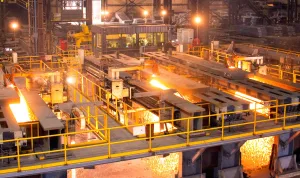Primary Drivers of Steel Production Costs in Hong Kong: Key Factors Impacting the Industry

Steel production is a vital part of Hong Kong’s construction and infrastructure sectors, but the costs involved in producing steel can vary significantly due to a range of factors. While Hong Kong’s steel industry is relatively small compared to mainland China, understanding the primary drivers of steel production costs in Hong Kong is essential for businesses and investors navigating the market. Several key factors influence these costs, from raw material prices to labor and environmental regulations.
1. Raw Material Costs
The most significant driver of steel production costs in Hong Kong is the price of raw materials, particularly iron ore, coking coal, and scrap metal. Since Hong Kong largely relies on imported steel or raw materials, fluctuations in global prices can have a direct impact on production costs. Changes in demand from major steel-producing countries, such as China and India, geopolitical tensions, and supply chain disruptions can all contribute to volatile raw material prices. Steel manufacturers in Hong Kong must carefully monitor these global price trends and adjust their purchasing strategies to remain cost-competitive.
2. Energy Consumption and Prices
Steel production is an energy-intensive process, and the cost of energy plays a crucial role in determining overall production costs. In Hong Kong, where energy prices tend to be higher than in many steel-producing countries, the cost of electricity and fuel significantly impacts the steel industry. The production of steel, particularly through processes like blast furnace smelting, requires large amounts of energy to melt and refine raw materials. As global energy prices fluctuate due to factors like oil price changes, energy policies, and supply chain disruptions, steel producers in Hong Kong face rising operational costs, which in turn affect the price of steel products.
3. Labor Costs
Another critical factor driving steel production costs in Hong Kong is labor. Compared to other regions, labor costs in Hong Kong are relatively high due to the city’s advanced economy and living standards. Steel production requires skilled labor for processes such as refining, shaping, and quality control, which means manufacturers must pay competitive wages to retain workers. Recent changes in Hong Kong’s labor laws, which aim to improve working conditions and wages, have further increased labor expenses in the steel industry. These higher labor costs contribute to the overall cost of producing steel in Hong Kong.
4. Environmental Regulations and Compliance
In response to global climate goals and local environmental policies, Hong Kong has implemented stricter environmental regulations on steel production. The steel industry is one of the largest contributors to carbon emissions, and new regulations require producers to adopt more sustainable practices, such as reducing emissions, improving waste management, and using cleaner technologies. While these measures are essential for reducing environmental impact, they also add to the cost of steel production. Companies must invest in eco-friendly technologies, comply with emissions standards, and manage waste disposal more efficiently, all of which increase operational costs.
5. Technological Investments
Steel production in Hong Kong, as elsewhere, is gradually adopting new technologies to improve efficiency and reduce costs. However, the initial investment in modern technologies such as automation, smart manufacturing, and digital monitoring systems can be substantial. While these advancements lead to long-term cost savings, the short-term capital expenditures required to implement them can drive up production costs. Additionally, ongoing maintenance and upgrades to these systems add to the financial burden on steel producers, particularly those with limited resources.
6. Logistics and Transportation Costs
Hong Kong’s reliance on imported raw materials and steel products means that transportation and logistics costs are a significant driver of production expenses. Shipping raw materials from distant locations, managing warehousing, and distributing finished products all contribute to the total cost of steel production. Any disruptions in global shipping routes, increases in fuel prices, or changes in trade policies can further inflate transportation costs, which steel producers must pass on to their customers. Given Hong Kong’s role as a global trading hub, managing these logistics costs effectively is crucial for maintaining competitive pricing.
7. Global Market Fluctuations
As a city with limited local steel production, Hong Kong is deeply influenced by global market conditions. Changes in steel demand from major economies, shifts in trade policies, or economic downturns can all affect steel prices and production costs. For instance, during periods of high global demand, steel prices tend to rise, increasing the cost of production in Hong Kong. Similarly, trade tariffs or export restrictions imposed by major steel-producing countries like China can drive up the cost of steel imports, adding further pressure to local producers.
Conclusion
The primary drivers of steel production costs in Hong Kong are influenced by both local and global factors. From rising raw material and energy prices to labor expenses and environmental regulations, these elements shape the overall cost structure for steel manufacturers. As Hong Kong continues to develop its infrastructure and construction sectors, steel producers must find ways to optimize their production processes, manage costs, and remain competitive in a fluctuating market. By understanding these drivers, businesses can better navigate the challenges of steel production and maintain a sustainable operation in the region.



